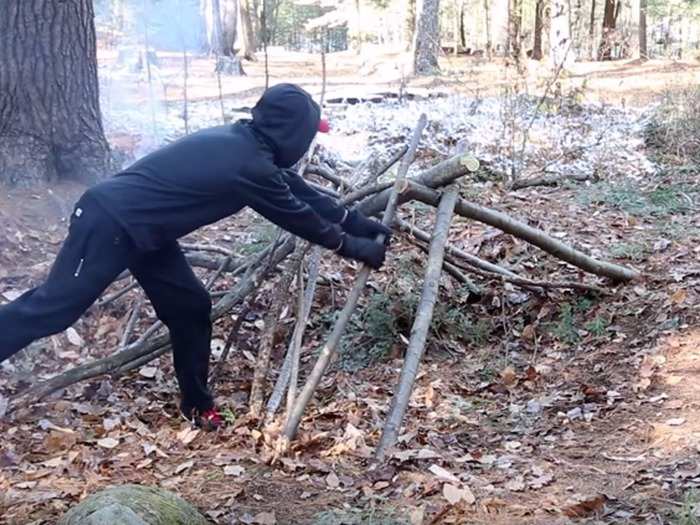10 Eagle Scout survival skills everyone should know
Eagle Scouts can start a fire anywhere, even in the rain. The trick to this is to look for a piece of wood that is standing upright (as it will be the least wet) and split it with a sharp knife. Next, put the wood against your cheek to see if its center feels dry.

If the center is dry, start shaving wafer-thin sections of the wood. You'll use this as tinder for the fire.
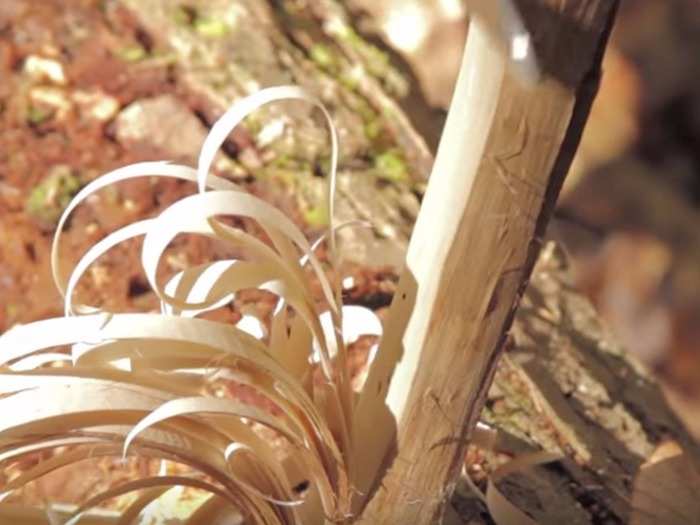
Meanwhile, cut foot-long pieces of the wood, which you'll use as a base for your tinder. Set the sticks across the base, spacing them about half an inch apart.
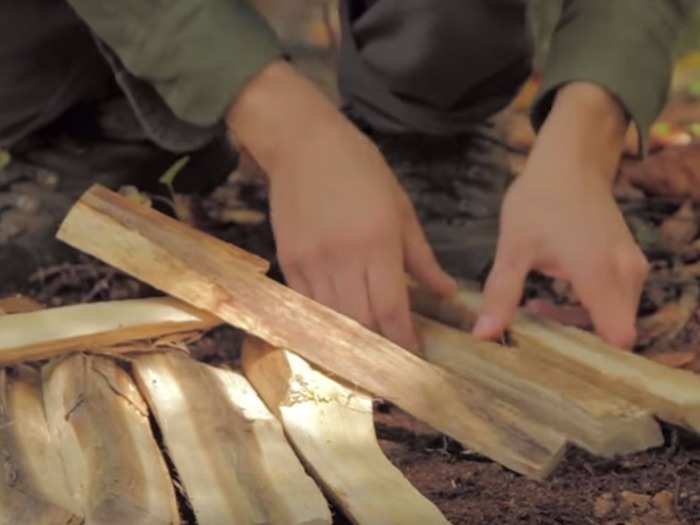
Assemble the shavings on top. Light a match directly underneath the tinder, using a piece of cotton to accelerate the process. When you see the first flame, continue hand feeding shavings in.
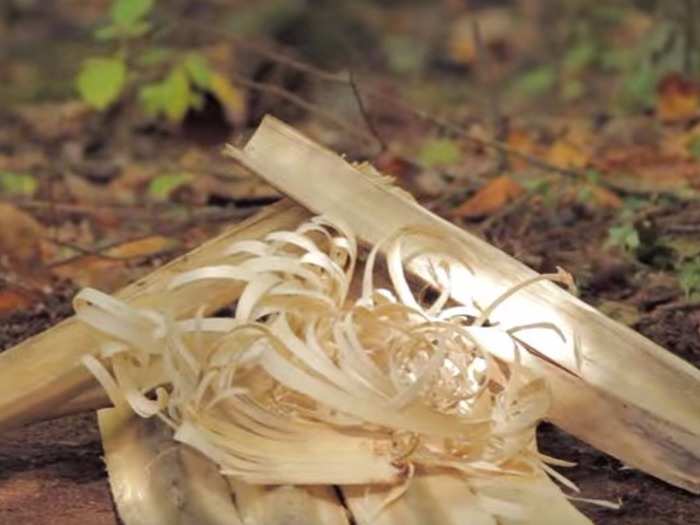
If they're stuck without a compass, Eagle Scouts can figure out which direction is north with only a stick. To do this, first place a stick or branch into the ground in a straight position so that it casts a shadow.
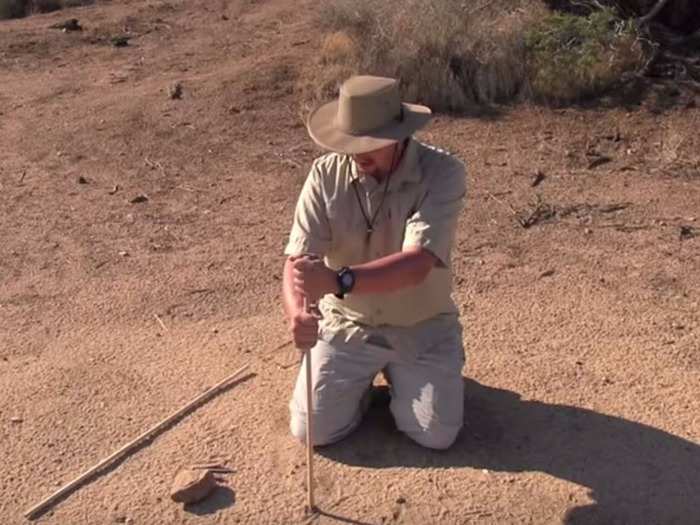
Mark the end of the shadow with a stone or a twig. This will become the west point.
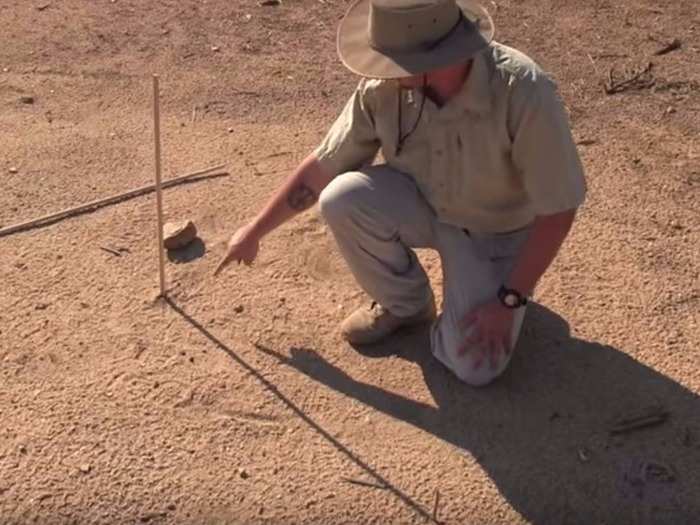
Wait about 10 to 15 minutes and the shadow tip will have moved. Mark the new position of the shadow tip with another stone or branch.
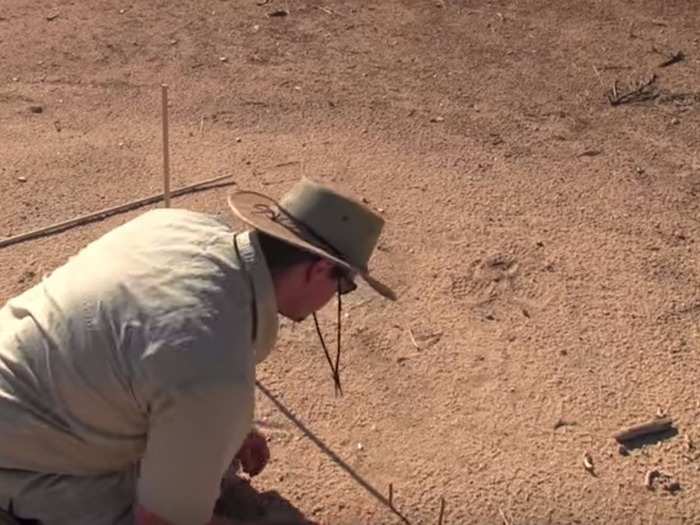
Draw a straight line through (or use another piece of wood) to connect the two marks together and form an east-west line. Stand with the first mark (the west point) to your left and the second mark (the east point) to your right, and you'll be facing north.
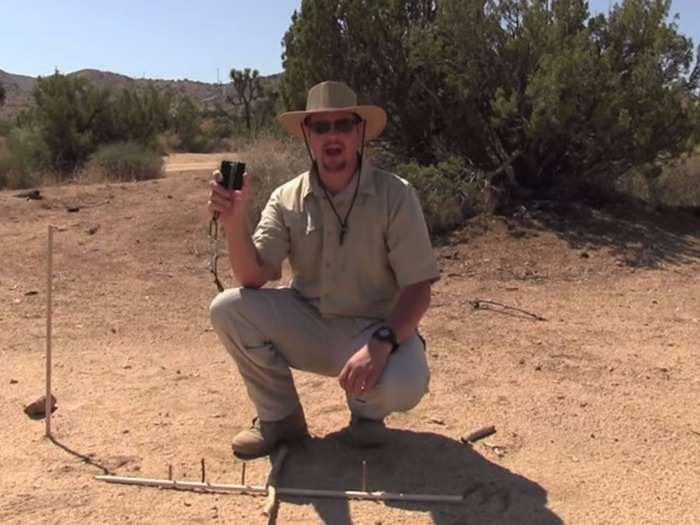
Eagle Scouts are experts at a wide variety of knots. One of them is the bowline, which is used to make a non-slip loop on the end of a rope and is often used for rescue work. To make a bowline, start by first forming a loop on the top of the line.
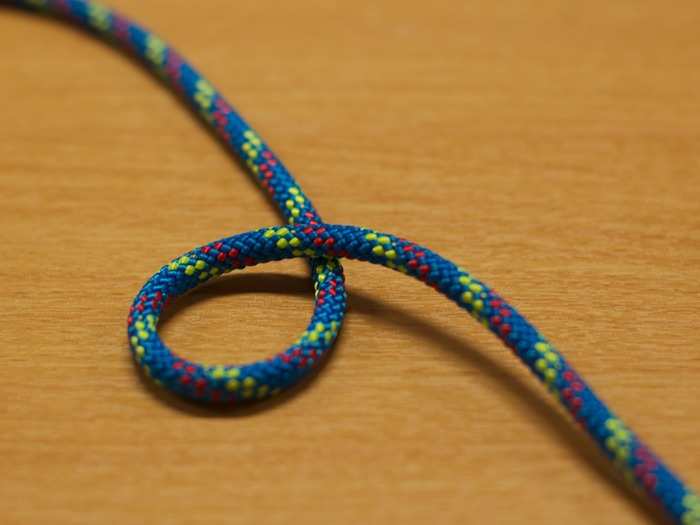
Next, pass the free end of the rope thorough the loop.
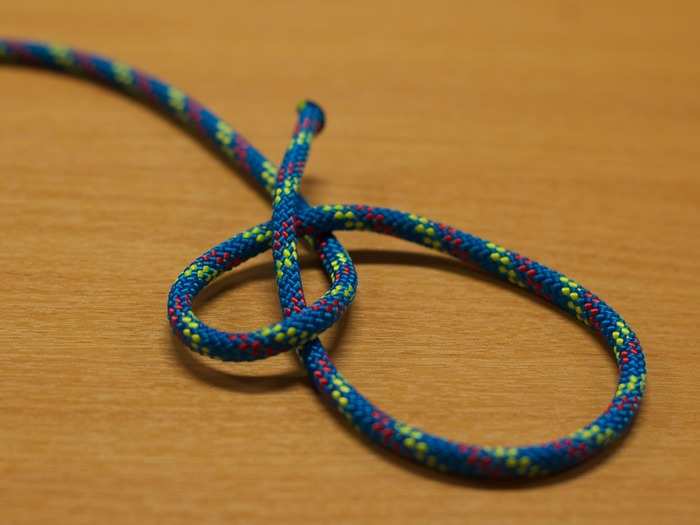
Bring it back around the standing end again.
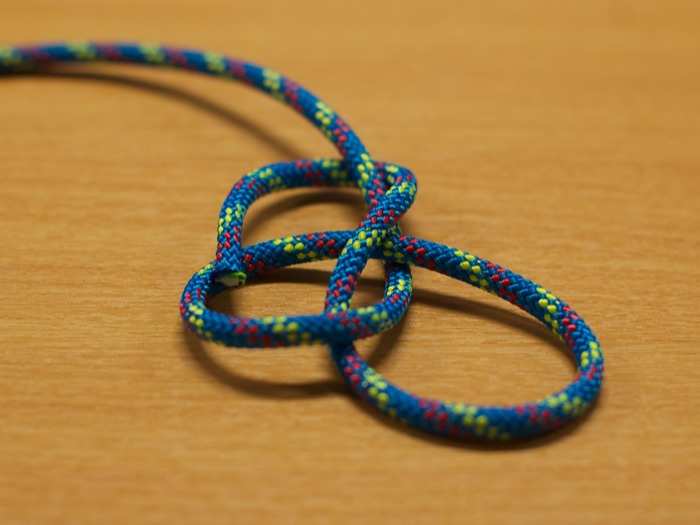
Continue around the stand end and then bring it back through the small loop.
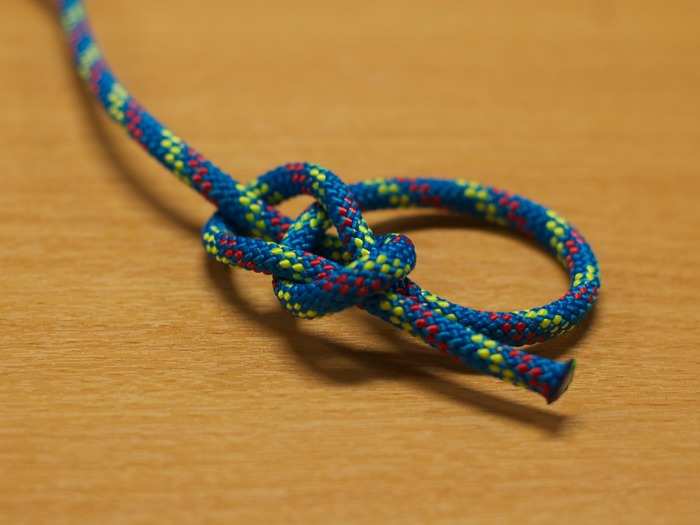
Finally, pull the rope to tighten the knot, and you'll have a loop that will maintain its size and structure.
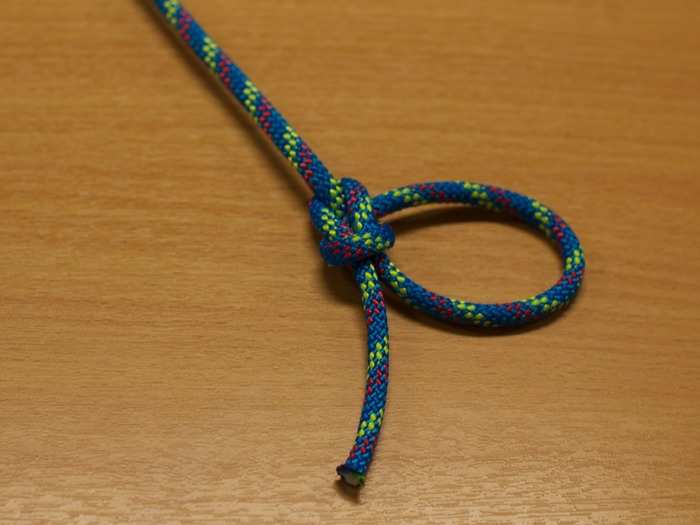
There's also an easy way to turn your pants into a flotation device. Tie the bottom of the pant legs into a square knot.
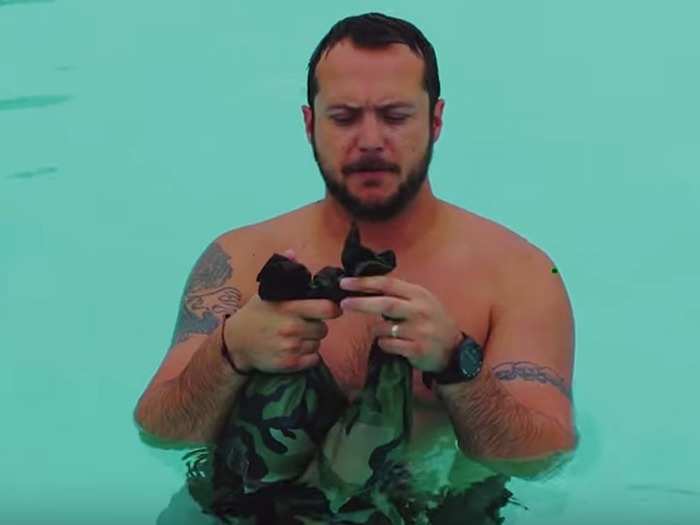
Next, take the waist of the pants and swing it over your head to capture air.
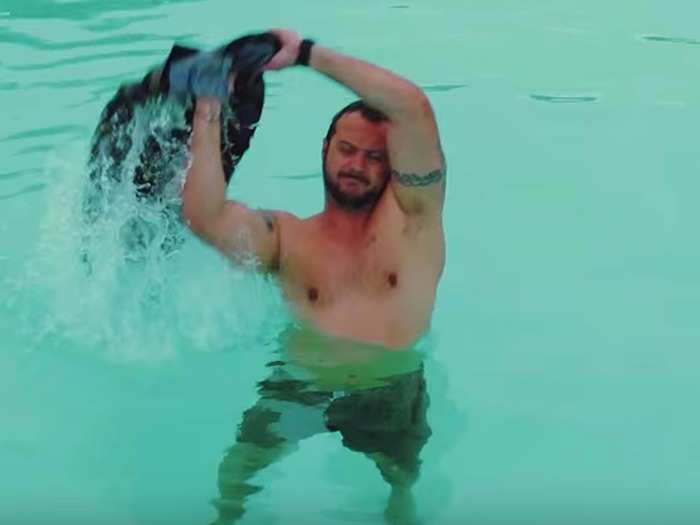
Once you bring them down, you'll see the pants have become inflated thanks to the air flow. Just make sure to keep them wet or you'll find yourself sinking.
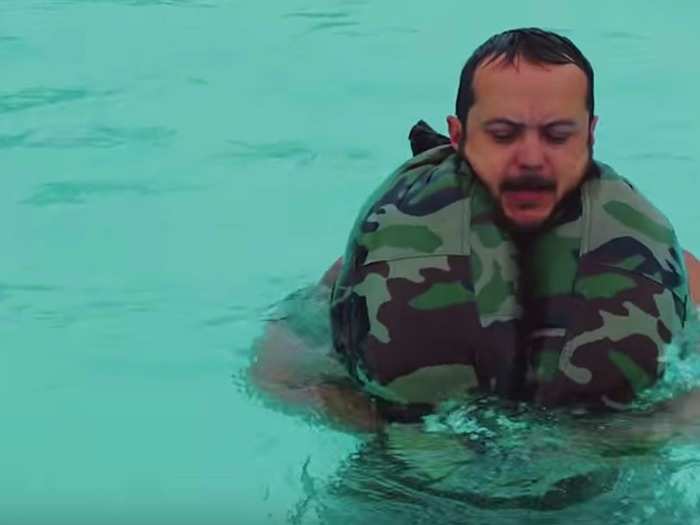
Eagle Scouts can also make a shelter, just in case they encounter a disastrous situation. One way to make a shelter is by starting with two large pieces of wood and lashing them together.
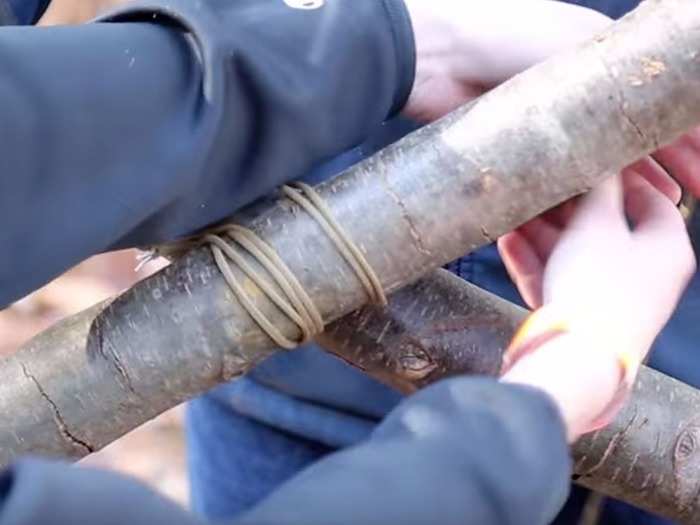
Next add in a third piece of wood and secure the pieces together.
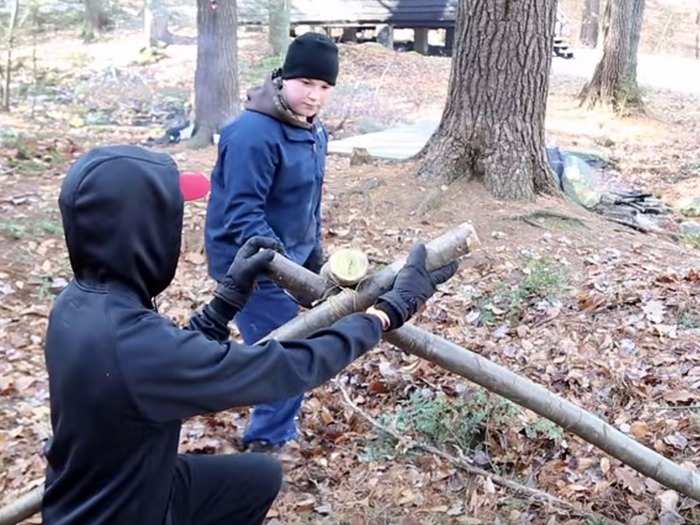
Cover the entire shelter with brush and evergreen for a secure place to stay.
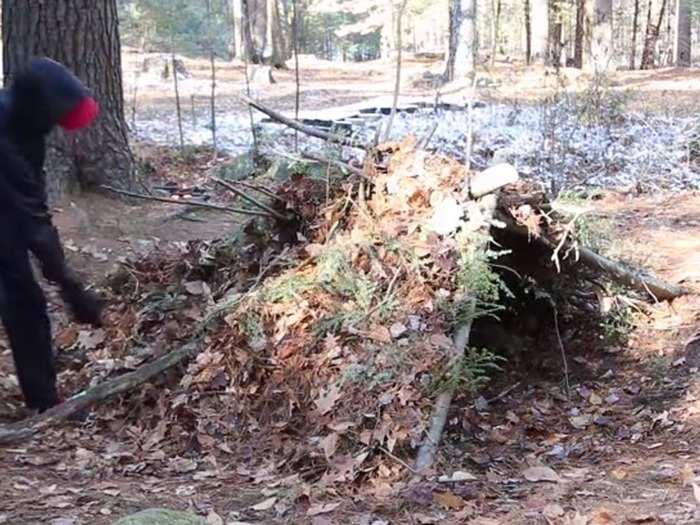
By using a reflective surface like a mirror, a CD, or a DVD, Eagle Scouts can alert that they are in danger. Any flat and shiny surface can be used for this.
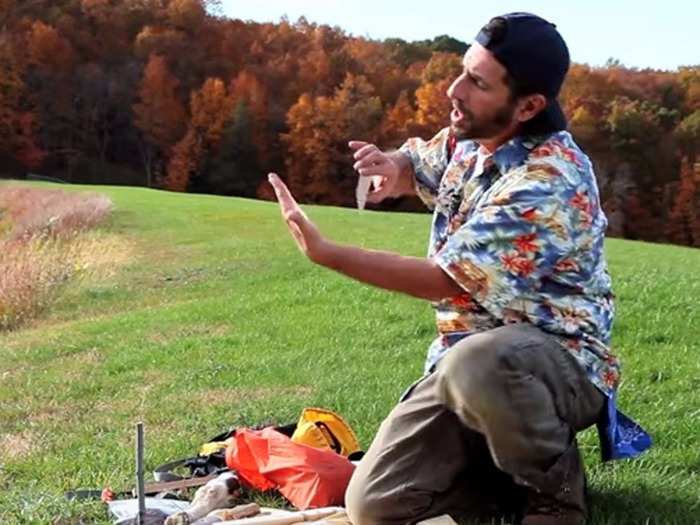
Simply make a V shape with your hand and when the sunshine reflects off of the surface, it will create a signal that others can spot.

Eagle Scouts are also trained in emergency first aid and medical assistance. They can build a makeshift stretcher by using two logs and placing them between a blanket.
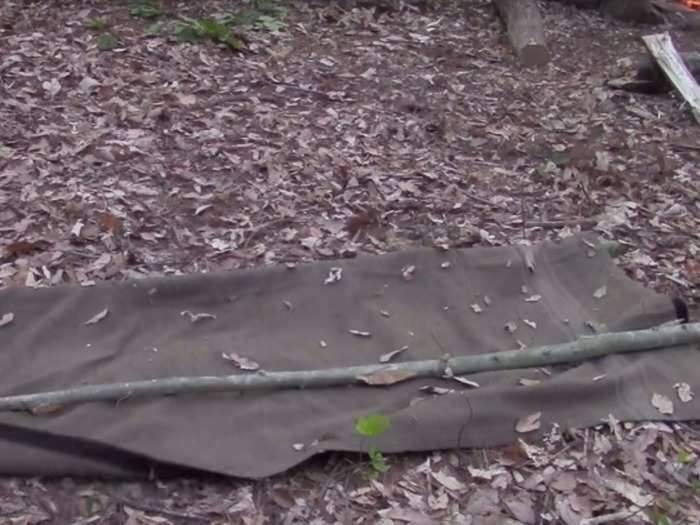
Fold the blanket over one of the logs and under the other, and the stretcher can be used to carry someone.
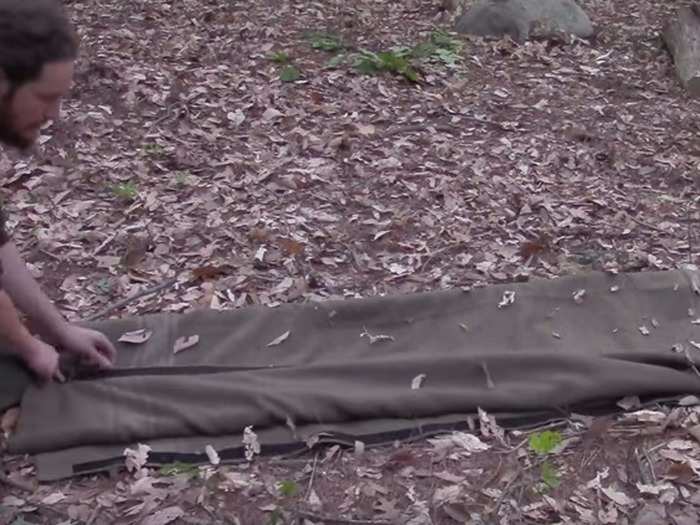
A Swedish Torch is a good option for cooking in the wilderness. This version of it is made by using three saw- or axe-cut logs.
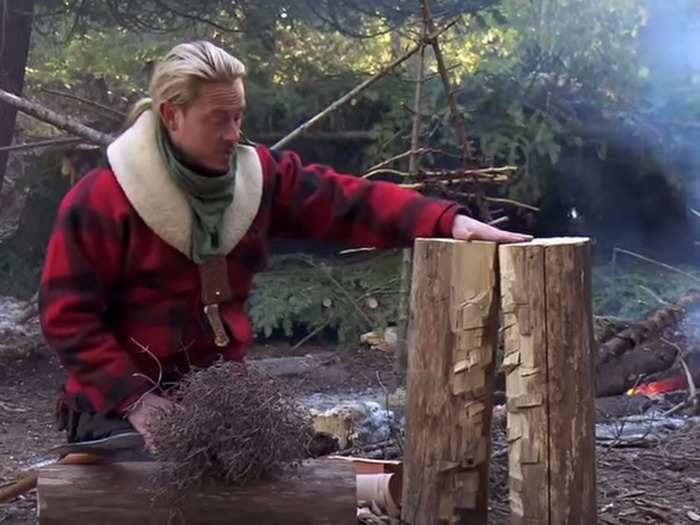
Next, chop the insides to expose the dry inner parts of the wood.
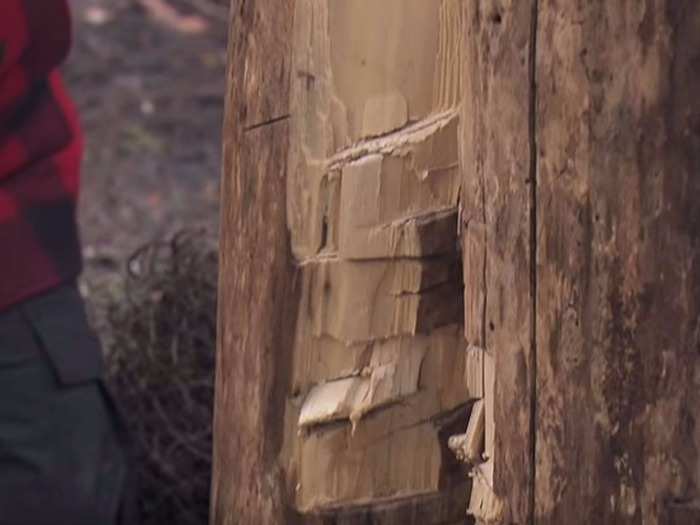
It will take about 15 to 20 minutes to reach a full flame, but it can last for hours.
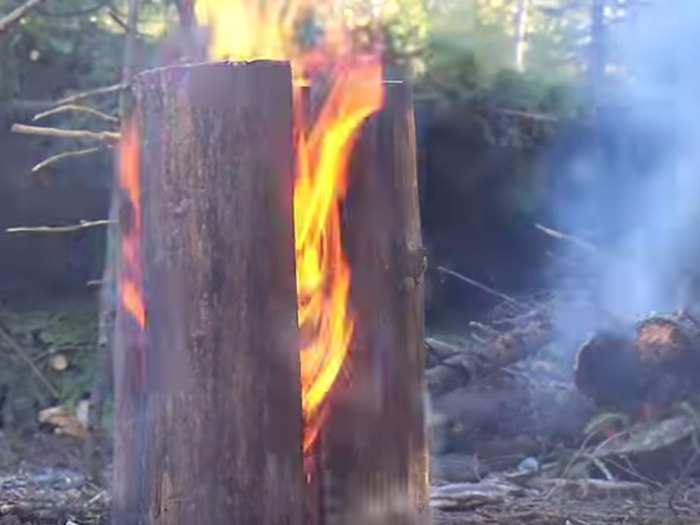
If a severe injury were to happen while in the wilderness, Eagle Scouts can create a tourniquet to stop the bleeding. This is done by taking a cloth, wrapping it around the person's body, and tying a knot. Take a stick and tie it to the knot you just made. Continue twisting until it tightens.
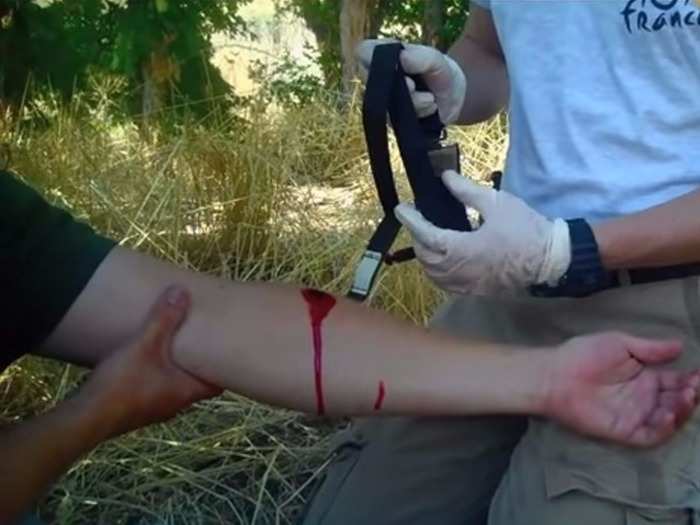
Drinking water is a necessity, and you can use rainwater to replenish your resources. Eagle Scouts collect rainwater by stretching out a shirt and using it to gather drops of rain.
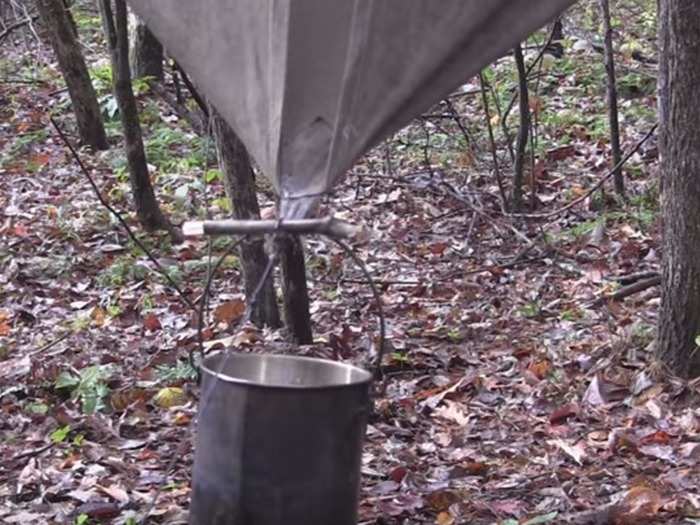
Popular Right Now
Popular Keywords
Advertisement
